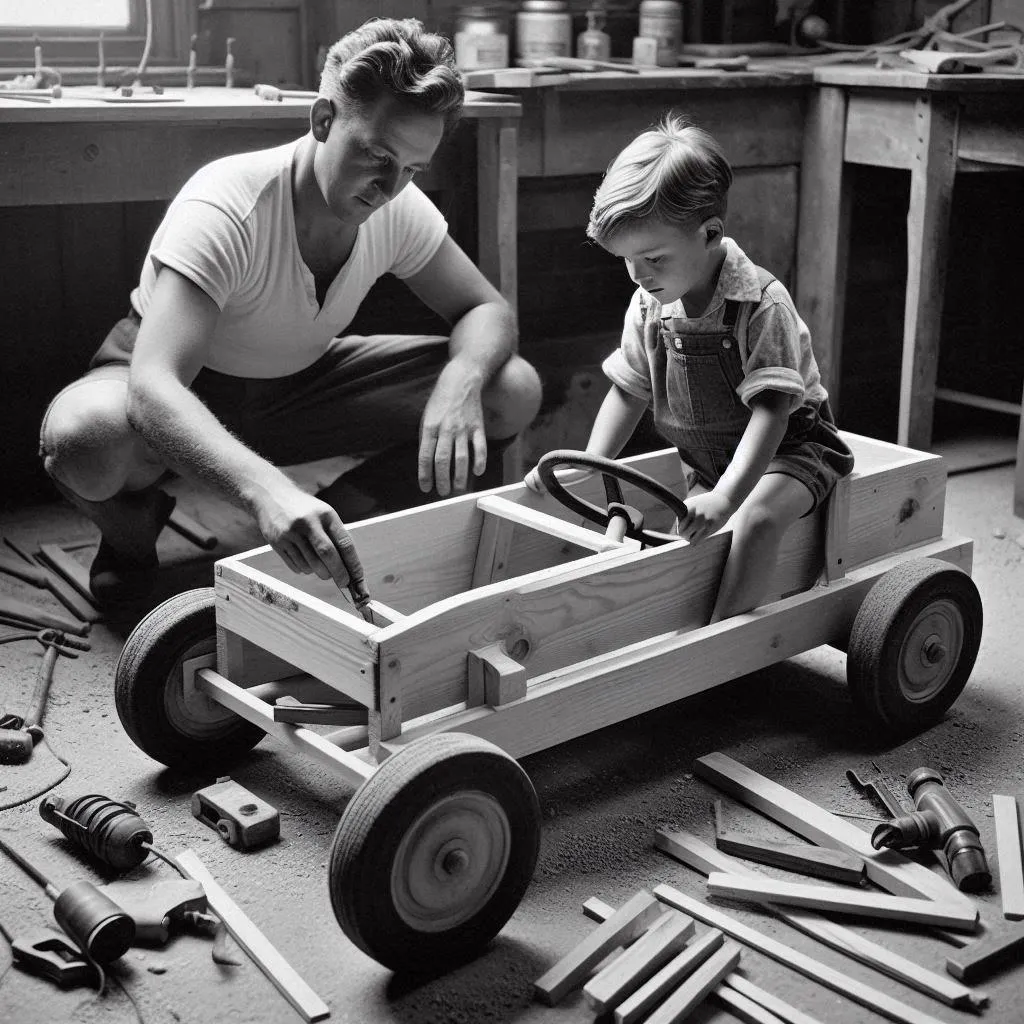
Tracing the Men in Our Lives: Honour Your Father's Lineage This Father’s Day
Tracing the Men in Our Lives: Honour Your Father's Lineage This Father’s Day
Father's Day offers more than just a moment to give thanks to the dads in our lives; it's an invitation to reflect on paternal heritage. For genealogists, this occasion opens a unique opportunity to explore the rich tapestry of paternal lineage—the men who helped shape our identities and histories. Whether it's a father, grandfather, or generations further back, every man in our paternal line has a story worth remembering and preserving.
The Importance of Paternal Genealogy
In genealogical research, the paternal line presents a straightforward but deeply significant path of exploration. Because surnames often pass from father to child in many cultures, tracking paternal ancestry can be more direct. In addition, Y-DNA testing provides a scientific backbone to these traditional methods, offering confirmation or revelation of lineages.
But genealogy is more than names and dates; it's the act of bringing stories to life. Our fathers and paternal ancestors left behind traces in documents, heirlooms, and oral histories that, when pieced together, form a vivid picture of the past.
Start with What You Know
As with all genealogical research, begin with yourself and work backwards. Talk to your father if he is still living. Ask about his father, his grandfather, and any uncles or male cousins. Even brief recollections—"He loved fishing," "He worked at the mill," or "He fought in the war"—can offer valuable clues.
Record these conversations, and take notes. Even details that seem minor at first—like a nickname or the make of a car—might unlock connections later.
If your father or older relatives have passed away, search through old letters, journals, toolboxes, pocket knives, or military medals. Photographs can speak volumes, especially when paired with captions, studio imprints, or handwritten notes on the back. These everyday items help create a mosaic of a man’s life.
Exploring Vital Records
Once you’ve collected oral histories and heirlooms, the next step is to verify and expand on them with official documentation. Start with the basics:
Birth certificates: These often contain a father’s name, occupation, and sometimes even the birthplace of the father.
Marriage certificates: They frequently list both sets of parents and can connect surnames and locations.
Death certificates: These often include valuable information such as the informant’s name (usually a spouse or child), cause of death, and burial location.
For paternal ancestors who served in the military, their service records and draft registrations are critical. These documents often include:
Physical descriptions (height, weight, eye and hair colour)
Next of kin information
Occupation prior to enlistment
Locations served and awards receive
Pension records, particularly for veterans of long-past wars like the First World War or the American Civil War, can be treasure troves. They may include personal affidavits, witness statements, or details about a man's health and family after his service.
Census and Land Records
Census records allow you to place your paternal ancestors in a specific time and location. They often show the family unit, occupations, and neighbours—helpful in understanding social context and tracking migrations.
Land records can demonstrate a man’s role in building or settling a community. These may include deeds, mortgages, and tax rolls. They’re especially helpful if your paternal ancestors were farmers, ranchers, or landowners.
Y-DNA: The Paternal Genetic Signature
One of the most powerful tools for tracing your father’s line is Y-DNA testing. Unlike autosomal DNA, which combines DNA from both parents and is diluted over generations, Y-DNA is passed nearly unchanged from father to son. This makes it ideal for exploring deep ancestral lines, verifying surname connections, and breaking through brick walls.
Y-DNA can:
Confirm relationships between men who share a surname
Help identify unknown fathers or grandfathers
Connect you to distant cousins who descend from the same male line
Several companies offer Y-DNA testing, and many genealogists contribute their results to surname-specific projects or geographic DNA studies. These collaborative efforts can lead to remarkable discoveries, including unknown branches of the family tree or the geographic origins of your paternal line.
Telling Their Stories
Collecting data is only one part of the journey. Genealogy becomes truly meaningful when we turn records into narratives. Ask yourself: Who was your father beyond the paperwork?
Did he build something with his hands?
Was he a gardener, a mechanic, a teacher?
Did he serve his country, coach a team, or play an instrument?
Bring in sensory details: the smell of his pipe tobacco, the sound of his laugh, the way he told bedtime stories or whistled while working. Include anecdotes that family members still talk about, like the time he fixed a neighbour’s car in a snowstorm or built a treehouse from leftover lumber.
These stories matter. They become the heartbeat of your family history.
Memorializing the Men Who Came Before
Genealogical research is also a form of remembrance. Father’s Day can be the perfect time to honour the men in your family with a tribute:
Create a digital family tree, highlighting your paternal line with photos and mini-bios.
Compile a memory book with scanned documents, stories, and images.
Write a letter to your father or grandfather, even if they’ve passed, sharing what you’ve learned.
Visit the grave of a paternal ancestor, or leave a virtual flower on a memorial website.
You might also consider creating a timeline or a shadow box with heirlooms, medals, or tools your father used. These tangible connections remind us of their presence in our lives.
Honouring the Unsung Heroes
Not all fathers were perfect, and not all stories are easy. Some men may have left or been absent; others may have made choices that caused pain. These realities are also part of your family history. Understanding their context can be healing—and can help you uncover generational patterns that affect the present.
Even if your paternal line includes mystery or hardship, you are still part of their story, and they are part of yours.
Generational Echoes
As you trace your father’s lineage, look for generational echoes. Are there shared talents, occupations, or quirks? Does a great-grandfather’s artistic skill show up in a grandson’s sketchbook? Did your father, like his own father before him, love fixing things or working with his hands?
Genealogy connects us not only to the past but to each other. In recognizing how the men in our families shaped the people we are today, we build bridges of understanding and appreciation across time.
Final Thoughts
Honouring your father's lineage this Father’s Day is more than a genealogical exercise—it’s an act of love. It's saying, "I see you, I remember you, I carry you with me."
So whether you're just starting your family tree or diving deeper into paternal records, take the time this June to explore, remember, and celebrate the men whose stories made your story possible.


